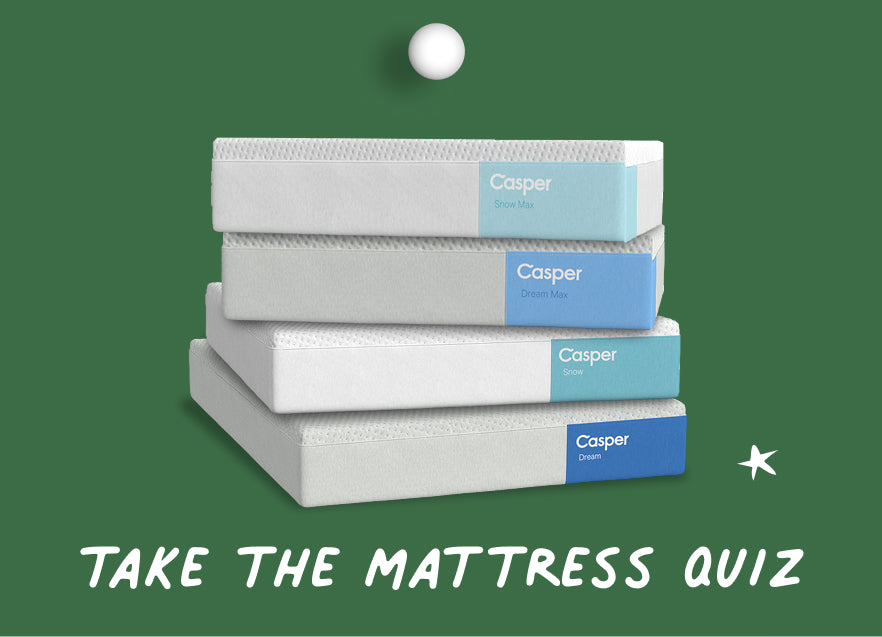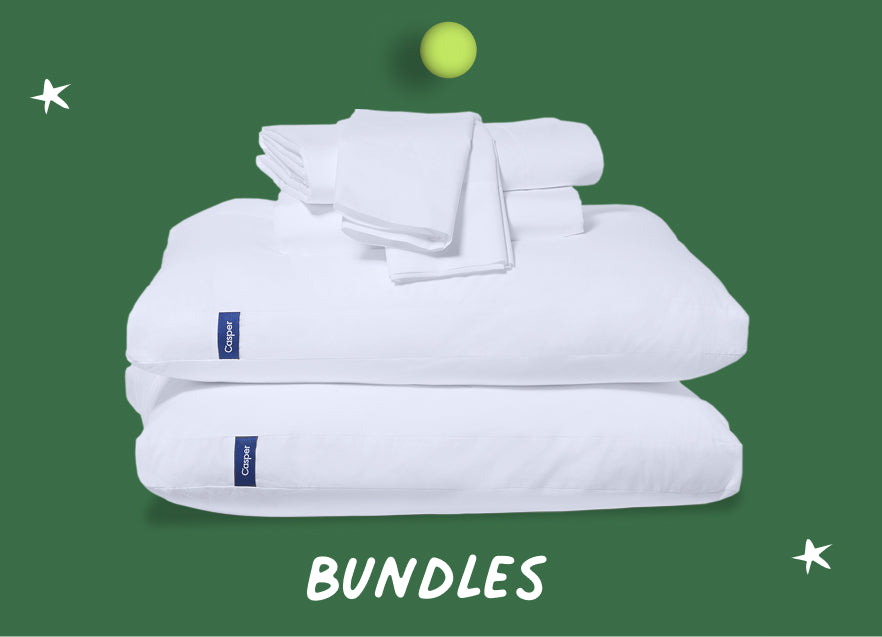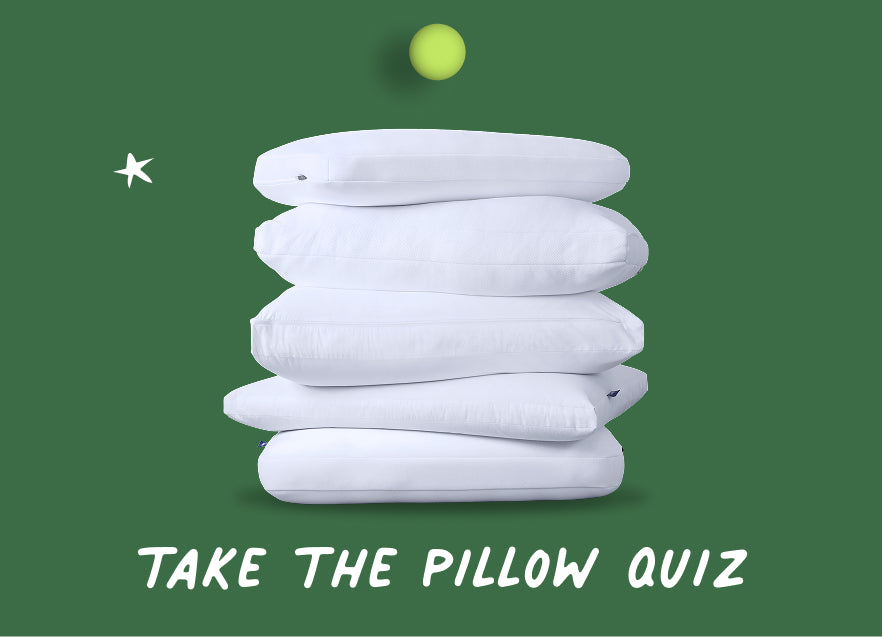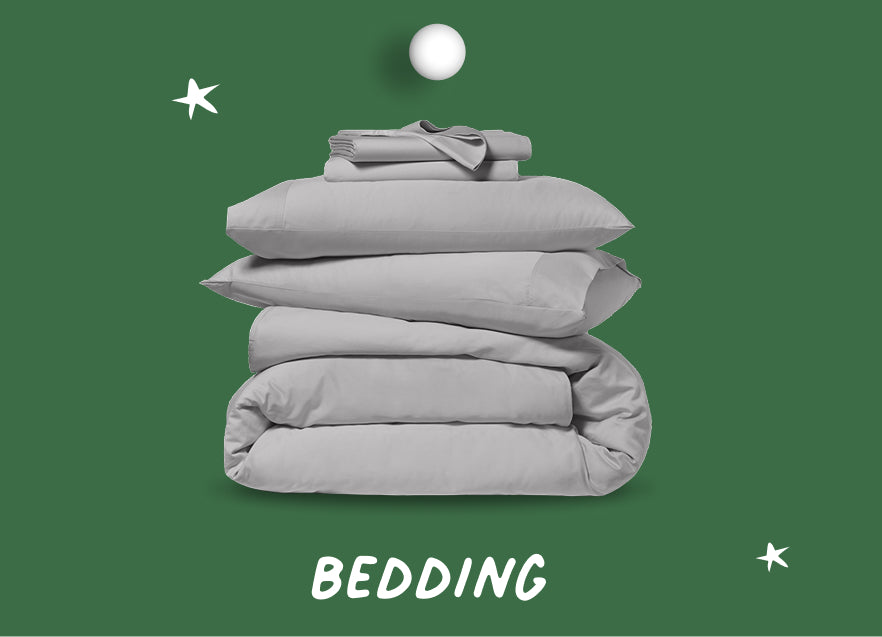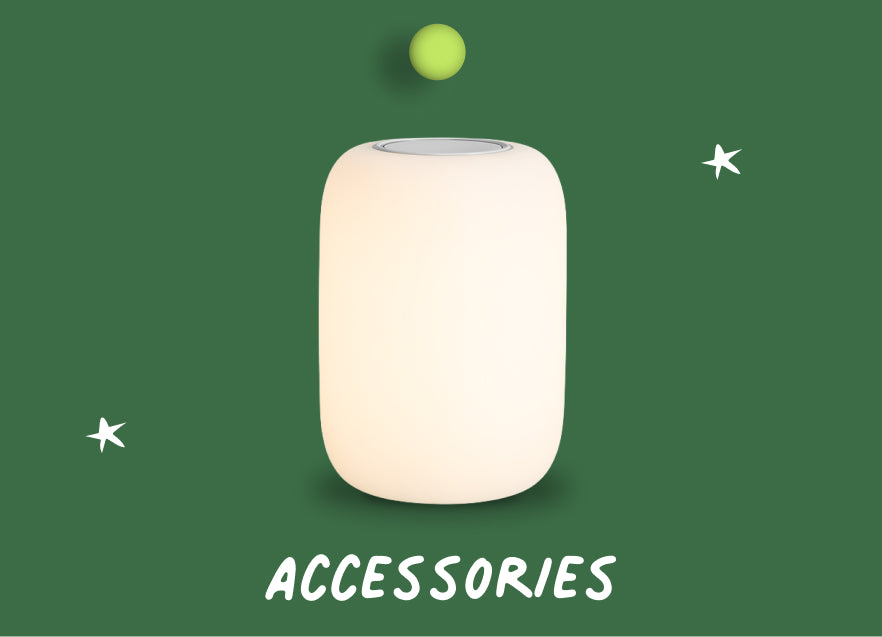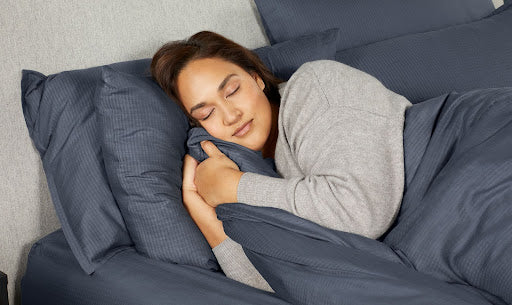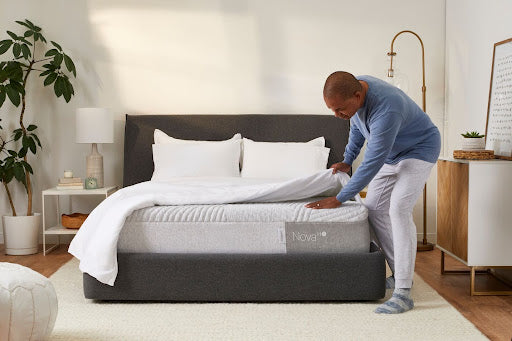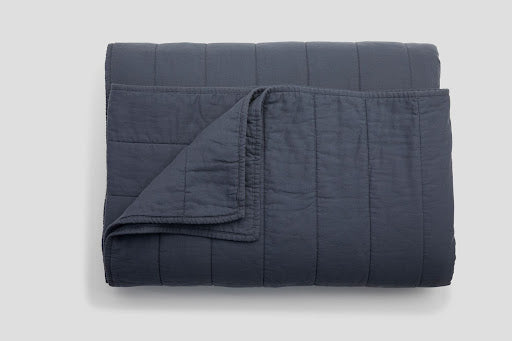The softest material for bed sheets is silk. It is known for its incredibly smooth and luxurious feel, offering a slinky, sleek texture that many consider the softest option. However, if you prefer a fluffier softness, brushed cotton, flannel, or bamboo may be better choices.
Silk, sateen, standard cotton — what is the softest material for bed sheets? While everyone’s softness standards are different, choosing bed sheets that match your needs is a must for a good night's sleep.
If you’re looking for that classic, smooth sheen, silk might be your ideal sheet material; however, you might be better suited to brushed cotton, or flannel may be better if you prefer a fluffier texture.
In this guide, we’re breaking down everything you need to know about bed sheet materials so that you can your perfect match.
Silk
If you prefer a slinkier, sleeker feel to your sheets, silk might be the ideal material for you. Silk is1:
- A natural fiber – While you might (reasonably) associate silk with silkworms, multiple types of insects produce these shiny fibers: beetles, bees, weaver ants, and more.
- Soft and shiny – Silk is known for being incredibly soft; however, silk isn’t “fluffy” like other soft materials. Instead, it offers a dreamy sheen. If you appreciate a luxurious, smooth touch against your skin, silk sheets might be the softest choice, though they require specific care outside the standard wash routine.
That being said, silk isn’t perfect for everyone, especially if you don’t want sheets that are1:
- Staticky – Silk is infamous for collecting static electricity.
- Harder to maintain – Silk sheets, while beautiful, require careful handling to maintain their delicate fibers.
- More expensive – Silk manufacturing is a labor-intensive process, making its price tag the highest of all the sheet materials on this list.2
Cotton
Flat or fitted, soft or sleek, cotton has been a mainstay in bed sheet design for generations. One of cotton’s biggest advantages is its versatility; cotton can be woven in a variety of ways to achieve various textures.
Take ultra-soft brushed cotton, for instance — the secret, soft ingredient in the Casper Supersoft Sheet Set. After weaving threads into fabrics, the textiles are brushed to slightly raise the fibers and create a fluffy feel that is cozy, warm, and, above all, soft.3
But this is just one cotton variety that can offer the supple softness you’re looking for in the perfect sheet set. Let’s take a look at a few other options.
Sateen Weave
Sateen weave sheets are:
- Made from 100% cotton
- Silky and smooth (not fluffy)
- Relatively heavy and warm compared to other varieties
Sateen is characterized by a unique weave style. Instead of a traditional one-over-one-under weave, sateen uses a one-under-three (or more)-over design to achieve a heavier, more wrinkle-resistant fabric.4
Like silk, sateen is luxurious and soft. However, these types of sheets are sleek and shiny instead of fluffy, so they might not suit every sleeper.
Percale Weave
Percale sheets are made using the classic one-over-one-under weave technique. This achieves4:
- A tight weave with a crisp, yet soft, texture
- Light, breathable fabric that’s perfect for hot sleepers
The Casper Percale Sheet Set is a fan favorite for its crisp feel and durable nature. These best-selling bed sheets are:
- Made from 100% organic cotton – While they’re somewhat crisp, our percale sheets get softer with every wash.
- Crisp and cool – Percale weaves produce a light, airy fabric that helps your skin breathe during slumber.
- 300 thread count – While thread count is complicated (and not the defining factor in comfort or softness), we tweaked our design to find the perfect balance of thread count, durability, and quality.5
Learn more about percale vs sateen sheets in our blog.
Long-Staple Cotton
Cotton is naturally derived; the cotton plant produces fibers that textile makers weave into threads and fabrics. However, some cotton plants produce longer “staples” (individual fibers) than others.6
Two lengths of cotton fibers are commonly used in bed sheets7:
- Short-staple fibers are the most common, and they’re used for a wide variety of fabrics — including denim and flannel.
- Long-staple fibers, on the other hand, are silkier and softer than their short-staple counterparts. Using long staple cotton fibers during the weaving process results in fewer exposed fiber ends and a smoother texture that softens with wear.
If you’re looking for silky-soft sheets rather than fluffy-soft sheets, try products made from long-staple cotton.
TENCEL™ Lyocell
While cotton is a staple of the bedding industry, some newcomers to the textile scene are making a splash (especially when it comes to softness) — including TENCEL™ Lyocell.
TENCEL™ Lyocell is8:
- Highly breathable – Made from fine fibers of cellulose, TENCEL™ Lyocell is lightweight and ideal for use in airy fabrics. Ideal for maintaining a comfortable sleep environment, TENCEL™ Lyocell sheets adapt well to fluctuating temperatures by wicking away moisture effectively.
- Sustainable – TENCEL™ Lyocell is made from cellulose, which is found in wood and plants — renewable resources. Plus, TENCEL™ Lyocell production is more efficient and less wasteful than processes used to make fabrics like polyester and rayon.9
- Soft to the touch – TENCEL™ Lyocell is often mistaken for cotton; it’s soft but crisp, offering lightweight comfort suitable for cozy sheets.
If you’re looking for maximum breathability, check out the Casper Hyperlite™ Sheet Set made from 100% TENCEL™ Lyocell. Our unique grid weave design creates a vent-like texture that supports airflow; if you’re looking for soft sheets that are also cool and light, you can’t go wrong with this set. To learn more, check out our blog on TENCEL vs cotton sheets.
Flannel
“Flannel” is an umbrella term describing soft, fluffy, and warm fabrics typically used to make clothing and bed sheets.10 If you’re not a fan of silkier textures, flannel could be your perfect match for warmth and comfort, especially during colder months.
Flannel can be made from a variety of materials, including10:
- Cotton (read up on flannel vs cotton sheets)
- Wool
- Synthetic fabrics
- Cellulose fibers
While flannel is ultra-soft, it does have some drawbacks, especially when it comes to making bedsheets:
- It’s warm – If you’re looking for toasty-warm sheets to pair with a thick down duvet — a common bedding combination in cold climates — flannel is ideal. However, it’s not always the right match for hot sleepers or people living in warm climates.
- It pills – Depending on the materials used to make it, flannel can pill over time. While you can remove pills with a fabric shaver, pilling and shaving can thin fabrics and impact comfort.
Bamboo
Bamboo is yet another innovative fabric that’s gained popularity in recent years. That’s because it’s:
- Sustainable – Bamboo grows incredibly quickly, requires very little water, and is easy to replant many times over — it’s a highly renewable resource.11
- Soft – Bamboo is soft to the touch and delightfully cozy, with a texture similar to jersey fabric, bamboo sheets are generally supple and somewhat stretchy.12
However, some sleepers find that bamboo doesn’t sleep as cool as cotton does; it can also carry a higher price tag than traditional cotton sheets.13
Eucalyptus
Eucalyptus is a fast-growing plant that’s tolerant of drought, cold, and other harsh conditions — and it’s being used in textile-making more than ever before.14
In fact, it’s most commonly used to make a bed sheet material we discussed above: TENCEL™ Lyocell. While multiple brands make lyocell fabrics, the TENCEL™ brand specifically uses eucalyptus as a source of cellulose when making their lyocell fabrics.15
Bedsheets made from eucalyptus are lightweight, breathable, and soft.8
What Factors Affect Sheet Softness?
Like mattresses, sheets are made using a variety of materials and design approaches. This means numerous factors can affect the overall softness of sheets.
Material Type
Materials are perhaps the most important consideration when looking for soft sheets — or mattresses in general. High-quality products are made from high-quality materials, and sheets are no exception.
The materials that produce the softest sheets are:
- Silk
- Cotton (especially brushed or long-staple cotton)
- TENCEL™ Lyocell (and, thus, eucalyptus)
- Flannel
- Bamboo
Two elements, in particular, impact the overall softness of a material:
- Built-in qualities – Long-staple cotton, for example, is easy to weave without exposing fiber ends. Its natural qualities make it a good match for silky-soft fabrics.7
- Manufacturing processes – While not all cotton fabrics are fluffy and soft, manufacturing processes can change the texture of a material. Brushing cotton, for instance, slightly raises cotton fibers to create a fluffier feel.3
Overall, the softness of a fabric can depend on the material it’s made from and how that material was handled during textile-making.
Weave
We touched on different weave styles when discussing sateen and percale. In that particular comparison, weave style makes all the difference4:
- Sateen’s unique weave style produces heavier, warmer fabric compared to a standard weave.
- Percale’s one-over-one-under pattern (a classic, go-to weave style) makes for lighter, airier, and crisper sheets — even when they’re made from the same materials as a sateen-woven sheet.
Of course, these aren’t the only two kinds of weaves you’ll find in sheet making; keep an eye out for other styles like knit, twill, and basket weaves.16
Thread Count
Whether you’re shopping for bed pillows, curtains, or sheets, you’ll always find mentions of thread counts. And while you might associate higher thread counts with higher quality, this isn’t always the case5:
- Thread count refers to the number of yarn threads in a square inch of fabric.
- The higher the thread count, the finer the yarns — after all, you can fit more thin strands than coarse strands into a square inch.
- Today’s bed sheets are made using a wide variety of materials and weave patterns. Some materials feature naturally finer yarns, but this isn’t an objective marker of quality.
Most importantly, thread count usually doesn’t indicate how soft (or starchy) a set of sheets may be. Instead of thread count, pay closer attention to materials and weave styles in your search for buttery-soft sheets.
Find Your New Favorite Soft Sheets at Casper
The bottom line? Soft sheets come in a variety of weave styles and materials. If you prefer a fluffier, cozier feel, consider brushed cotton, flannel, or bamboo. Understanding fabric properties will help you select the ideal sheets for your comfort and sleep style. If you love the feel of silky-smooth fabrics, percale or TENCEL™ Lyocell sheets are great options.
Casper bed sheets feature all three of these bed sheet varieties: our Supersoft, Percale, and Hyperlite sheet sets deliver supreme softness, high durability, and an undeniably cozy night’s sleep.
In your search for softness, choose Casper: the sleep company that dreams bigger.
Sources:
- MasterClass. Fabric Guide: What Is Silk? How to Use and Care for Silk Fabric. https://www.masterclass.com/articles/fabric-guide-what-is-silk-how-to-use-and-care-for-silk-fabric
- Good Housekeeping. The Best Silk Sheets to Buy for Your Most Luxurious Bed Ever. https://www.goodhousekeeping.com/home-products/best-sheets/g32968949/best-silk-sheets/
- Pound a Metre. What Is Brushed Cotton? A Brief Introduction. https://www.poundametre.com/blogs/sewciety-fabric-blog/what-is-brushed-cotton-a-brief-introduction
- Sleep Foundation. Sateen vs. Percale Sheets. https://casper.com/blog/percale-vs-sateen-sheets/
- Good Housekeeping. What’s the Ideal Thread Count for Sheets? The Truth Is, It May Not Matter. https://www.goodhousekeeping.com/home-products/a27494227/best-thread-counts-for-sheets/
- Textile Exchange. Fiber Length. https://textileexchange.org/glossary/fiber-length/
- Home Grown Cotton. The Differences Between Short and Long Staple Cotton. https://www.homegrowncotton.us/blog/the-differences-between-short-and-long-staple-cotton
- SewPort. What Is Lyocell Fabric: Property How It’s Made, and Where. https://sewport.com/fabrics-directory/lyocell-fabric
- Wired. What Exactly Is Lyocell Fabric, and Is It Really Eco-Friendly? https://www.wired.com/story/what-is-lyocell-fabric/
- SewPort. What Is Flannel Fabric: Properties, How It’s Made, and Where. https://sewport.com/fabrics-directory/flannel-fabric
- Sustainable Review. Is Bamboo Sustainable? All You Need to KNow About Eco-Friendly Bamboo. https://sustainablereview.com/is-bamboo-sustainable-all-you-need-to-know-about-eco-friendly-bamboo/
- Glamour. Bamboo Bedding: 5 Best Bamboo Sheets That Are Soft and Sustainable. https://www.glamourmagazine.co.uk/article/bamboo-sheets
- Sleep Foundation. Bamboo vs. Cotton Sheets: Which Should You Choose?. https://www.sleepfoundation.org/best-sheets/bamboo-vs-cotton-sheets
- University of Arkansas. Plant of the Week: Hardy Eucalyptus. https://www.uaex.uada.edu/yard-garden/resource-library/plant-week/eucalyptus-hardy-10-2-09.aspx
- Real Simple. The 7 Best Lyocell (aka Eucalyptus) Sheets, Tested and Reviewed. https://www.realsimple.com/home-organizing/decorating/decorating-bedroom/best-eucalyptus-sheets
- Yorkshire Fabric Shop. What Are the Four Types of Weaves?. https://yorkshirefabricshop.com/blogs/knowledge/what-are-the-four-types-of-weaves?srsltid=AfmBOopgQrWr-SM6s-weC-yD3tcpYPh5bAmdLjn_mOQhJWE5zjK79JOO

